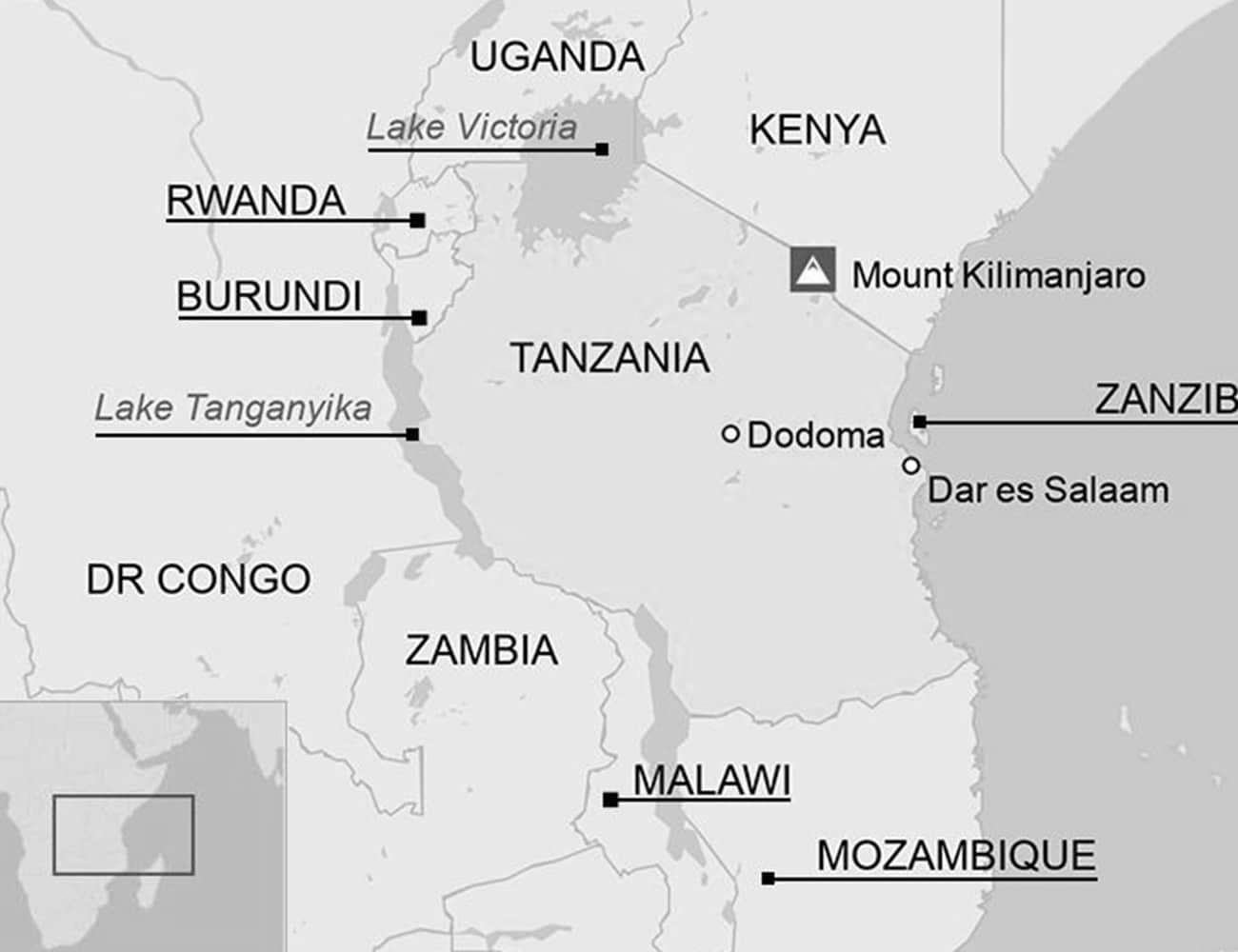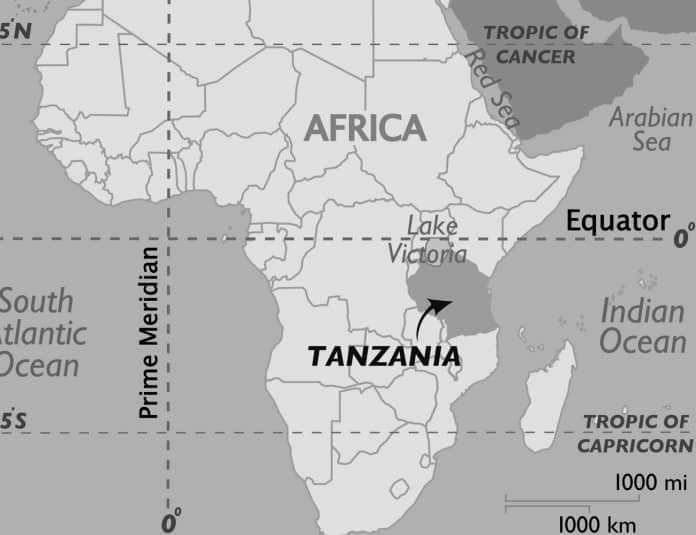Navigating Africa’s Diversity: Is Tanzania Located in East or West Africa?
When it comes to Africa’s diversity, few countries embody it as much as Tanzania. With its stunning landscapes, abundant wildlife, and vibrant cultures, Tanzania is a treasure trove of experiences waiting to be discovered. But one question that often arises is: where exactly is this country located in Africa? Is Tanzania in East or West Africa?
The location of Tanzania: East or West Africa?

Is Tanzania in West or East Africa? Tanzania is typically considered part of East Africa. Bordered by Kenya and Uganda to the north, Rwanda, Burundi, and the Democratic Republic of the Congo to the west, and Mozambique, Malawi, and Zambia to the south, Tanzania occupies a significant portion of the eastern coast of the continent. Its proximity to the Indian Ocean further reinforces its position as an East African nation.
East Africa is known for its diverse landscapes, ranging from the iconic Mount Kilimanjaro to the vast plains of the Serengeti. The region is also home to several other countries, including Kenya, Uganda, Rwanda, and Burundi. Each of these countries has its own unique characteristics and attractions, making East Africa a popular destination for travelers seeking adventure and natural beauty.
East Africa: Exploring the countries and characteristics

Kenya, known for its world-famous Maasai Mara National Reserve and the bustling capital city of Nairobi, is a popular starting point for safaris and wildlife encounters. Uganda, on the other hand, offers the chance to trek through dense forests in search of gorillas and immerse oneself in the rich culture of the local communities. Rwanda, with its breathtaking mountain gorillas and lush landscapes, has emerged as a top ecotourism destination in recent years. Meanwhile, Burundi, with its lesser-known attractions, is a hidden gem waiting to be explored.
East Africa is known for its warm and welcoming people, diverse wildlife, and vibrant cultural heritage. Visitors to this region can expect to encounter a tapestry of languages, traditions, and cuisines that reflect the rich history and diversity of the area. Whether it’s exploring the ancient Swahili ruins of Lamu in Kenya or embarking on a safari in the Ngorongoro Crater in Tanzania, East Africa offers a multitude of experiences for every kind of traveler.
West Africa: Exploring the countries and characteristics

In contrast to East Africa, West Africa is located on the opposite side of the continent. It is known for its vibrant music, colorful markets, and bustling cities. The region is home to countries such as Nigeria, Ghana, Senegal, and Ivory Coast, each with its own distinct cultural identity and historical significance.
Nigeria, the most populous country in Africa, boasts a rich cultural heritage and is famous for its Nollywood film industry. Ghana, known as the “Gateway to West Africa,” offers visitors a chance to explore ancient castles, lush rainforests, and vibrant markets. Senegal, with its lively music scene and vibrant capital city of Dakar, is a cultural hub that celebrates its African roots. Ivory Coast, with its stunning coastal landscapes and diverse wildlife, is a hidden gem waiting to be discovered.
West Africa is known for its diverse ethnic groups, languages, and traditions. The region is a melting pot of cultures, with influences from indigenous tribes, Arab traders, and European colonial powers. Visitors to West Africa can expect to be immersed in a tapestry of colors, sounds, and flavors that reflect the vibrant spirit of the region.
Understanding Tanzania’s geographical position
Now that you know the answer to the question: Is Tanzania in East or West Africa? Let’s discuss why Tanzania is in East Africa.
While Tanzania is geographically classified as an East African country, its location does not limit the richness of its diversity. Tanzania occupies a strategic position on the eastern coast of Africa, with the Indian Ocean serving as a gateway to the world. This advantageous location has shaped Tanzania’s history, culture, and economy, making it a unique blend of influences from both East and West Africa.
Tanzania’s geographical position has played a significant role in its historical development. The coastal areas of Tanzania, including the island of Zanzibar, were once important trading hubs, attracting merchants from Arabia, Persia, and India. These interactions resulted in a fusion of cultures, with Arab, Indian, and African influences shaping the Swahili culture that is prevalent in the region today.
Furthermore, Tanzania’s location has also made it a strategic center for trade and commerce. Its ports, such as Dar es Salaam and Zanzibar City, serve as vital gateways for goods entering and leaving East Africa. The country’s proximity to landlocked countries in the region has also made it a key transit route for trade, further enhancing its economic importance.
Historical and cultural influences on Tanzania’s identity

Tanzania’s identity is a reflection of its complex history and diverse cultural heritage. The country’s indigenous tribes, such as the Maasai, Chagga, and Sukuma, have preserved their traditions and way of life, contributing to the rich tapestry of Tanzanian culture. Additionally, the Arab and European influences that shaped the coastal areas have left their mark on the architecture, language, and cuisine of the region.
The Swahili language, which is widely spoken in Tanzania, is a testament to the fusion of cultures that occurred in the coastal areas. Swahili is a Bantu language with significant Arabic influences, making it a unique and widely understood language in East Africa. This linguistic diversity is a reflection of Tanzania’s multicultural heritage and serves as a unifying force among its diverse population.
Tanzania’s cultural festivals and celebrations showcase the country’s diverse heritage. The Zanzibar International Film Festival, for example, celebrates the region’s film industry and promotes cultural exchange. The Ngorongoro Festival, held annually in the Ngorongoro Conservation Area, brings together different tribes to showcase their traditional music, dance, and clothing. These events provide a platform for Tanzanians to celebrate their cultural identity and share it with the world.
The debate: East or West Africa?
Is Tanzania in West or East Africa? Whether Tanzania is located in East or West Africa is a subject of debate and can be approached from different perspectives. Geographically, Tanzania is part of East Africa, as it occupies a significant portion of the eastern coast of the continent. However, Tanzania’s cultural heritage and historical influences also have ties to West Africa, particularly due to the Arab and European influences that shaped the coastal regions.
It is important to remember that Africa’s diversity cannot be neatly categorized into rigid geographical boundaries. The continent is a complex tapestry of cultures, languages, and traditions that defy simple categorization. Tanzania, with its unique blend of influences from both East and West Africa, exemplifies this diversity and serves as a reminder that labels can only capture a fraction of the richness that Africa has to offer.
Tanzania’s regional partnerships and affiliations
Despite the ongoing debate about its geographical classification, Tanzania actively participates in regional partnerships and affiliations that reinforce its position as an East African nation. The country is a member of the East African Community (EAC), a regional intergovernmental organization that promotes economic integration and cooperation among its member states.
Through its membership in the EAC, Tanzania benefits from various initiatives aimed at enhancing regional trade, investment, and infrastructure development. The organization also facilitates the free movement of goods, services, and people within the member states, fostering economic growth and integration.
Tanzania’s regional partnerships extend beyond East Africa. The country is also a member of the Southern African Development Community (SADC), a regional organization that promotes economic cooperation and integration among its member states in Southern Africa. This affiliation allows Tanzania to engage with countries beyond its immediate region and contribute to broader regional development initiatives.
Implications of Tanzania’s location for tourism and trade
Tanzania’s location as part of East Africa has significant implications for tourism and trade. The country’s diverse landscapes, including the iconic Mount Kilimanjaro and the Serengeti National Park, attract millions of tourists each year, contributing to the growth of the tourism industry. Tanzania’s proximity to neighboring countries in East Africa also makes it an ideal destination for regional travelers seeking unique experiences.
In terms of trade, Tanzania’s location along the eastern coast of Africa positions it as a gateway for trade between East Africa and the rest of the world. The country’s ports and transport infrastructure play a crucial role in facilitating regional and international trade, connecting landlocked countries in the region to global markets. Tanzania’s strategic location has also made it an important player in regional trade blocs, such as the EAC and SADC, further enhancing its economic prospects.
Embracing Tanzania’s unique position in Africa
In this article, we have answered the question: Is Tanzania in East or West Africa? Tanzania’s geographical location may classify it as an East African country, but its true identity transcends labels. The country’s rich diversity, shaped by historical and cultural influences from both East and West Africa, makes it a unique destination that defies categorization. Tanzania’s regional partnerships and affiliations reinforce its position as an active participant in East African and broader regional initiatives.
Whether you see Tanzania as part of East Africa or believe its cultural ties to West Africa are equally significant, one thing is clear: Tanzania offers a world of possibilities waiting to be explored. From its stunning landscapes and abundant wildlife to its vibrant cultural heritage, Tanzania promises an adventure like no other. So, the next time you find yourself wondering whether Tanzania is in East or West Africa, remember that the answer lies in embracing its unique position as a bridge between two worlds.
For more articles related to Geography of Tanzania, click here!

































